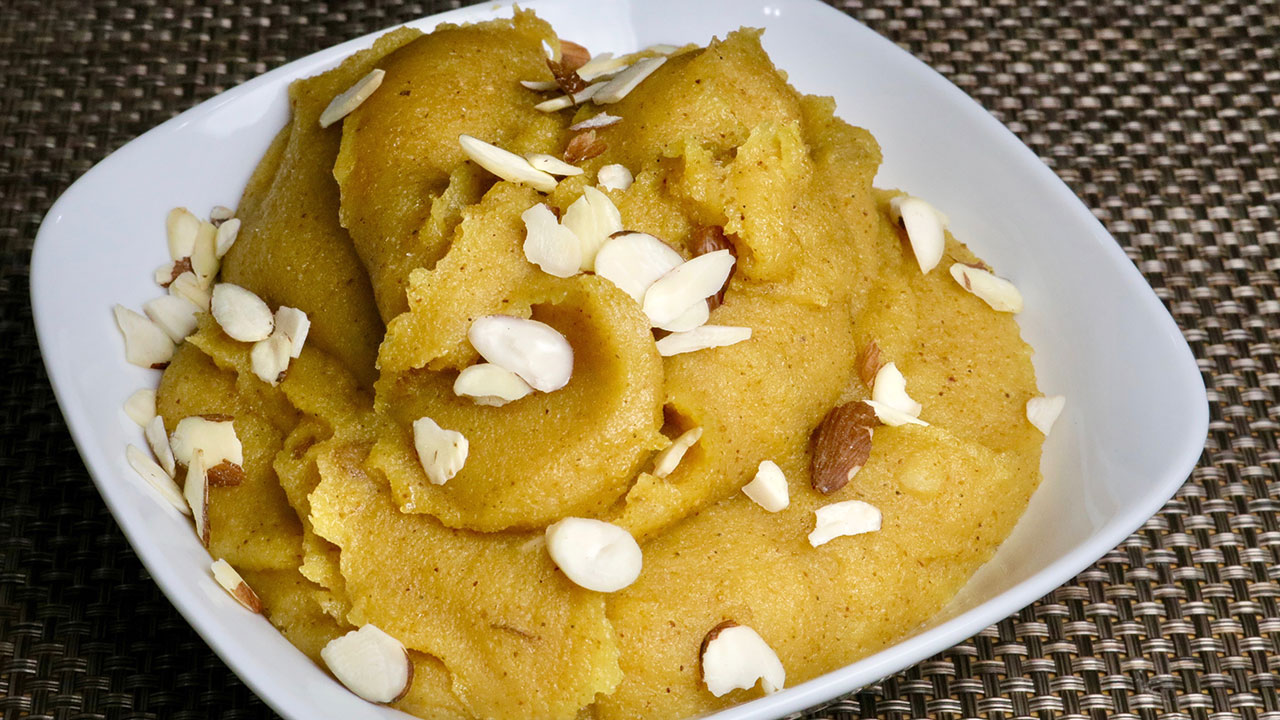Ever tried the Indian halwa?
A traditional sweet-dish with varied recipes in different parts of India, halwa is simple and delectable. While its conventional versions are made using wheat or semolina, some unusual variants use fruits and vegetables for the preparation.
An Indian sweet made using wheat, semolina or gram flour together with sugar, milk, and ghee (clarified butter), halwa, as it is known in north India, or sheera, as it is called in the southern parts of the country, is easy to make, and is one of the most popular of Indian sweets.
Commonly made in homes, particularly during winters, when a bowl of hot halwa can comfort one from the cold, the sweet is enjoyed all year round.
What steals the show during winters, however is the carrot halwa, which is a favourite of many.
The wheat halwa is also served as prasad (holy offering) to devotees visiting gurudwaras (places of worship for Sikhs), and the semolina halwa is often prepared for pujas (rituals) in Hindu homes.
And while these make for some of the classic halwas, ones that people also cognize with, there are variants that are not so common and are eccentric versions of this simple dish. Sample these-
Banana halwa– Known as kele halvo in Konkani language, this variant of halwa is comparatively healthier as its recipe does not use much sugar, with the kele or bananas lending a natural sweetness. To make this halwa, over-ripped Nendran variety of banana is used. The variety is cultivated in southern India, where the halwa is more commonly prepared than any other part of the country.
Apple halwa– Apple is a versatile fruit that can be eaten raw as well as cooked to prepare deserts like apple pie or apple halwa. Smooth in texture, this halwa is also aromatic with hints of added cinnamon and vanilla. The best part about it is that it is not heavy like the other variants of the dessert, as it does not contain milk, cream or khoya (a milk product).
Chukundar halwa– This recipe can make for an interesting summer dessert. Unlike other halwas, that are best eaten hot, chukundar or beetroot halwa is best served cool. It is creamy, delicious, and fulfilling. The taste of this halwa is akin to that of carrot halwa, and has similar aromas and textures – those borrowed cardamom and roasted cashew nuts. “Beetroot halwa is our second most selling sweet-dish after fudgy chocolate brownie. We sell 20-25 plates of this everyday,” says Gokul Jain of Triveni Terrace Café, an eating joint in New Delhi.
Lauki halwa– Lauki or gourd halwa is generally prepared during Navaratri (a nine nights Hindu festival, celebrated in twice every year) and Ekadashi (eleventh lunar day of each of the two lunar phases which occur in a Hindu calendar month). It can be served hot or cold.
Aloe vera halwa– Generally aloe vera is used for cosmetic and digestive purposes but surprisingly it can also be used as an ingredient for a sweet dish. To make this innovative halwa, mash the pulp of aloe vera. Heat ghee in a pan and then add the pulp in it. After few minutes add sugar and flour to it. Serve hot.
Only a few options of unusual preparations, these halwas should get the gourmands going. One can also experiment with onion and potatoes and make not-so-sweet yet delicious halwas.










